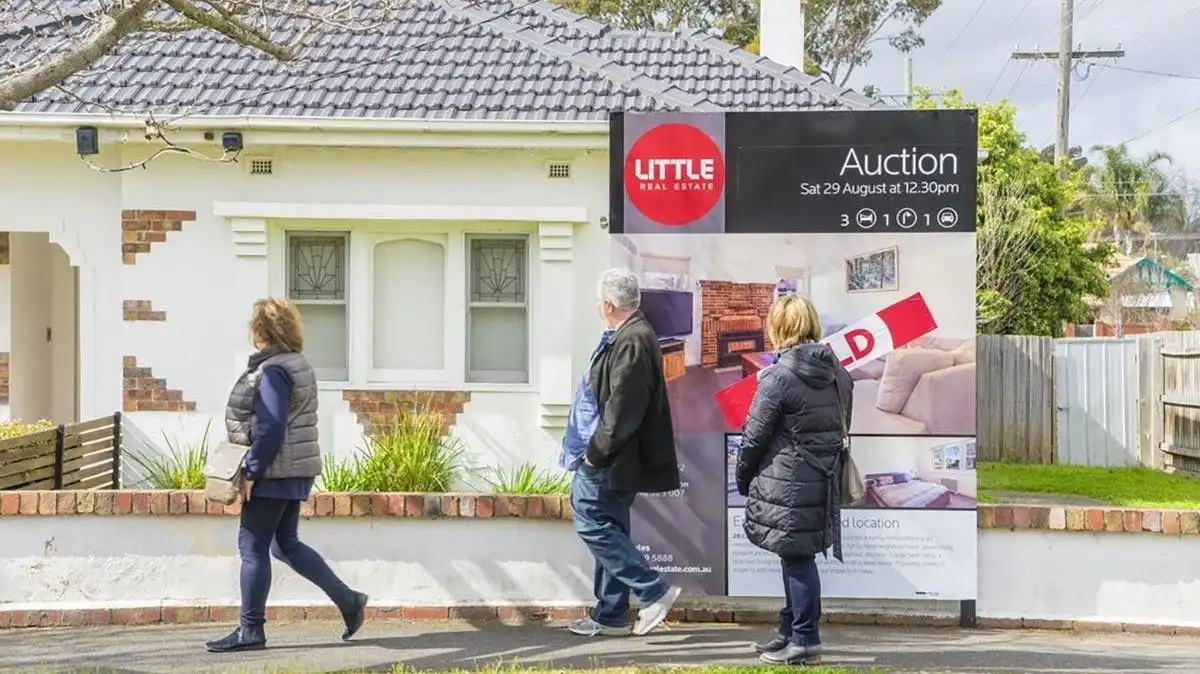Australian property dips as market faces further cooling into 2023
The effects of the first interest rate hike in more than 11 years are now being felt across the country as national property prices dropped by -0.1 per cent in May, according to CoreLogic's latest report.
Once again, results were mixed between different cities and regional areas but prices still remain well above pre-pandemic levels.
With rates tipped to continue rising into 2023, the future of the Australian property market is looking very different to its recent past.
National property values: May 2022
Houses$822,110Monthly change: -0.1%
Units$622,019Monthly change: -0.1%
The -0.1 per cent dip in May represents the first time property prices have fallen on a national level since September 2020.
As we've seen in recent months, there is now a sizeable spread between the best- and worst-performing markets.
| Market | Month | Quarter | Annual | Median Value |
|---|---|---|---|---|
| Sydney | -1.0% | -1.4% | 10.3% | $1,120,836 |
| Melbourne | -0.7% | -0.8% | 5.8% | $806,196 |
| Brisbane | 0.8% | 4.6% | 27.8% | $779,895 |
| Adelaide | 1.8% | 5.7% | 26.1% | $628,744 |
| Perth | 0.6% | 2.7% | 5.6% | $555,538 |
| Hobart | 0.3% | 0.3% | 17.3% | $738,399 |
| Darwin | 0.5% | 2.2% | 6.4% | $504,306 |
| Canberra | -0.1% | 2.2% | 18.7% | $940,026 |
| Combined capitals | -0.3% | 0.4% | 11.7% | $829,390 |
| Combined regional | 0.5% | 3.6% | 22.1% | $597,074 |
| National | -0.1% | 1.1% | 14.1% | $752,507 |
Australia's two biggest markets experienced the biggest losses for the month. Sydney homes were down by -1.0 per cent, while Melbourne dropped -0.7 per cent.
Some heat came out of the Brisbane market, but the QLD capital still posted a gain of +0.8 per cent. Adelaide, meanwhile, continued its remarkable run with a +1.8 per cent boost, a lift from the previous month.
Perth prices look to be on the up after a +0.6 per cent jump in May. Hobart and Darwin were also in positive territory, gaining +0.3 and +0.5 per cent respectively, while Canberra held relatively flat with a -0.1 per cent dip.
Regional Australia softened during the month but added another +0.5 per cent growth overall.
Taking a longer-term look, prices are still significantly stronger in every market than they were pre-pandemic.
For perspective, Sydney remains +22.7 per cent up, Melbourne is still +9.8 per cent up, and Canberra prices are +37.9 per cent higher than they were prior to March 2020.
It's also important to note that the federal election may have caused some interruption to the property market and slowed overall activity.
Interest rates are hurting higher-priced markets the most
The Reserve Bank of Australia's (RBA) announcement last month that interest rates would be hiked for the first time in over a decade came at a time when housing affordability was already stretched to the limit in many locations.
CoreLogic's research director Tim Lawless explained that, now that the perfect storm of conditions that sparked the 2021 housing boom has shifted, a correction in the market is to be expected.
"Since then, housing has been getting more unaffordable, households have become increasingly sensitive to higher interest rates as debt levels increased, savings have reduced and lending conditions have tightened," he said.
"Now we are also seeing high inflation and a higher cost of debt flowing through to less housing demand."
Sydney and Melbourne, two cities where affordability has been a major issue, are now the two markets that have been first to be impacted by interest rate hikes.
That change has been more or less inevitable as prices have risen +28.6 per cent nationally since their pandemic low.
More affordable markets of Brisbane, Adelaide and Perth aren't expected to be hit as hard. In fact, Adelaide and Perth have both experienced an upswing in May.
Listings remain low in standout markets
As ever, supply and demand is playing a key role in the differing results seen between cities and regions.
On a national level, listings are now -10.3 per cent lower than they were this time last year, indicating there's a shortage of available stock.
In Sydney and Melbourne, though, the number of properties on the market is now slightly higher than they were 12 months ago, so buyers have a lot more to choose from.
It's worth pointing out that this will be good news for those buying and selling at the same time. While sale results may be on the decline, finding a new home to buy without having to pay extraordinary prices has become easier.
Beyond the two biggest capitals, listings are still exceedingly low in some parts of the country.
Stock is far below the five-year average in Adelaide (-39.5 per cent), Brisbane (-38.2 per cent) and Perth (-34.7 per cent), and demand is still outstripping supply.
Even so, when looking to the future Mr Lawless said "A combination of higher interest rates, lower rates of household saving and a potentially more cautious lending environment is likely to reduce housing demand further just as total advertised stock levels are likely to continue rising, further empowering buyers by creating increased competition amongst vendors."
Regional markets are still holding onto widespread monthly growth
As has been the case throughout 2022 so far, Australia's regional markets have grown more consistently and, in most cases, have outperformed their capital city counterparts.
A broader slowdown is hitting the regions now too, but they may not fall to the same degree as the capital city markets.
| Market | Month | Quarter | Annual | Median Value |
|---|---|---|---|---|
| Regional NSW | 0.4% | 3.3% | 24.0% | $746,839 |
| Regional VIC | 0.4% | 2.1% | 17.6% | $594,056 |
| Regional QLD | 0.6% | 4.5% | 23.9% | $557,479 |
| Regional SA | 1.3% | 6.2% | 21.1% | $330,229 |
| Regional WA | 0.6% | 2.5% | 9.4% | $407,519 |
| Regional TAS | 0.9% | 3.9% | 25.4% | $534,778 |
South Australia was again the standout state for regional performance in May, followed by Tasmania and Queensland, though all states remained in the green.
Mr Lawless pointed out that the regions won't be immune to the downward pressures of interest rate hikes and worsening affordability, but it may not be to the same degree seen in the capitals.
"Arguably some regional markets will be somewhat insulated from a material downturn in housing values due to an ongoing imbalance between supply and demand as we continue to see advertised stock levels remain extraordinarily low across regional Australia," he said.
What's next for the Australian property market?
Economists have been predicting a correction in the market for some time now, and since interest rates are expected to rise substantially we're seeing that happen perhaps more swiftly than some anticipated.
The RBA's admission that "it's not unreasonable to expect that interest rates would get back to 2.5 per cent" indicates that there should be a drop in buyer demand over the next 12 months, pushing price growth down across the country.
AMP Capital's chief economist Shane Oliver said that "Sydney, Melbourne and Canberra are likely to be hardest hit, Brisbane and Adelaide may hold up for a few months longer and Perth and Darwin may hold up better as Perth is only just above its 2014 high and Darwin is still below."
On the other hand, "regional prices may also continue to benefit" and "units may not fall as much as they did not go up as much," he said.
Mr Lawless pointed out that there are also some positive economic factors to note, including ultra-low unemployment which is putting upward pressure on wages growth.
"As income growth outpaces housing values, the home deposit hurdle will gradually lessen, reducing one of the key barriers to entry for home buyers," he said.
It's key to remember that those buying and selling at the same time will enjoy a more balanced market, and lower sale prices will be offset by cheaper purchases.
But for those looking to achieve a top sale price, it may be best to move sooner rather than later, before interest rates rise higher and dampen the market further.








